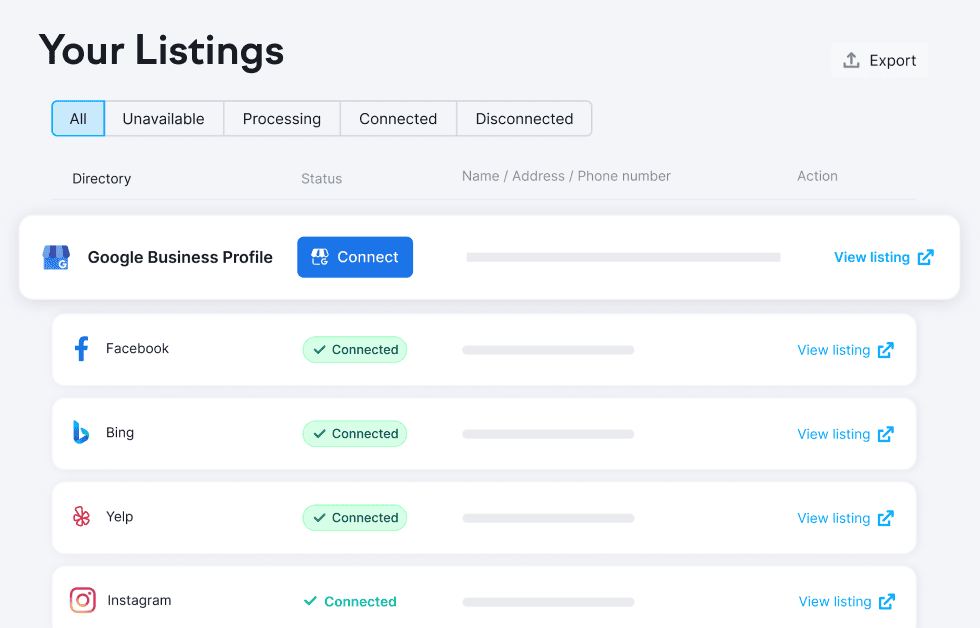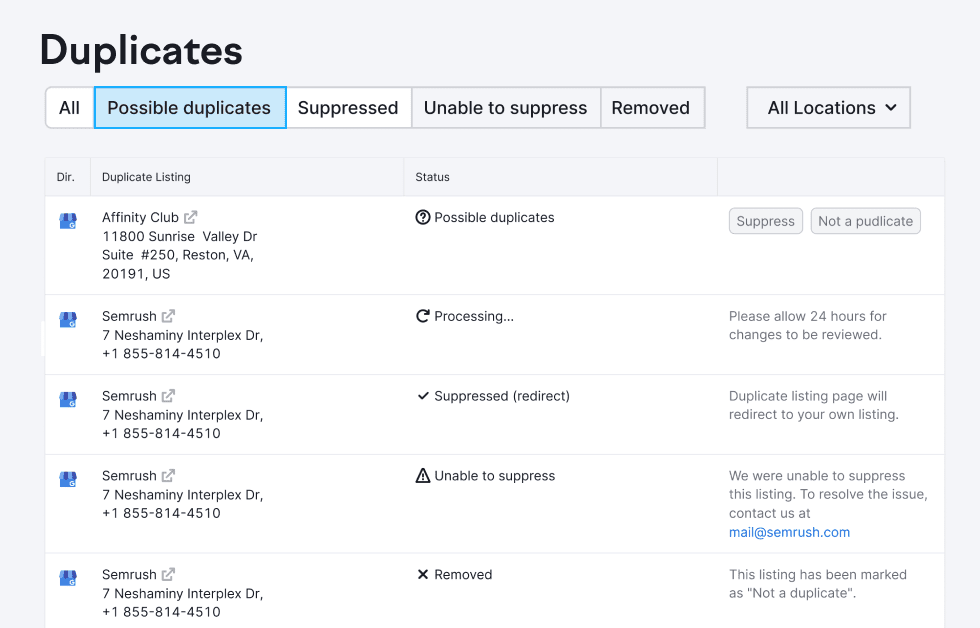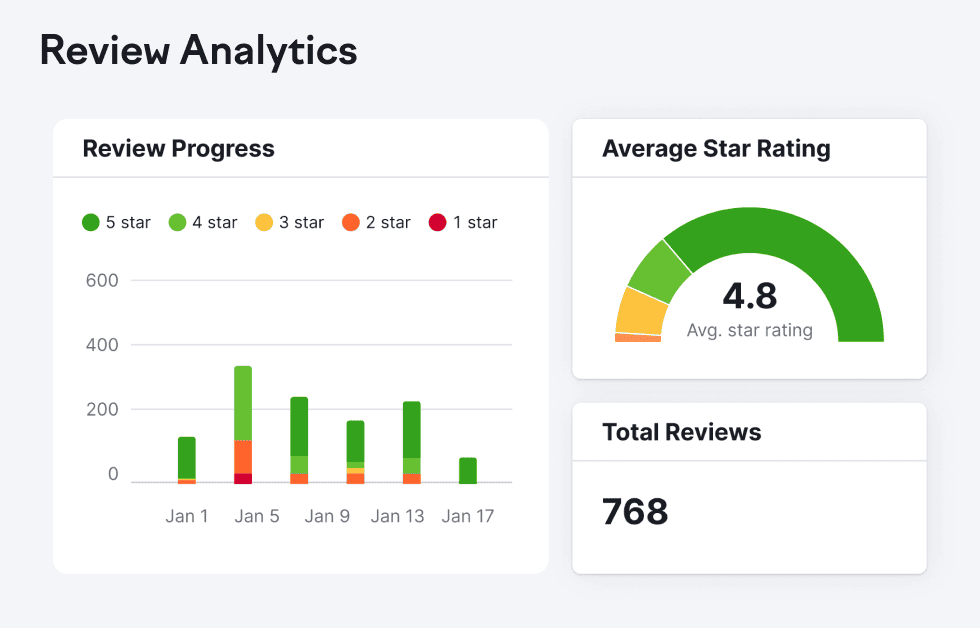- You need to understand which local SEO ranking factors actually make a difference before you can execute an effective strategy for your business.
- Google has revealed some of the key local ranking factors you should have in your SEO strategy.
- Effectively keeping track of your local rankings progress requires specialist tools, such as Semrush Local's Map Rank Tracker tool.
What are local SEO ranking factors?
Local SEO ranking factors are the specific things marketers focus on to help improve the position of businesses in search results. Essentially, it’s what search engines like Google look for when deciding which businesses to display in prime positions like the local pack (or three pack).
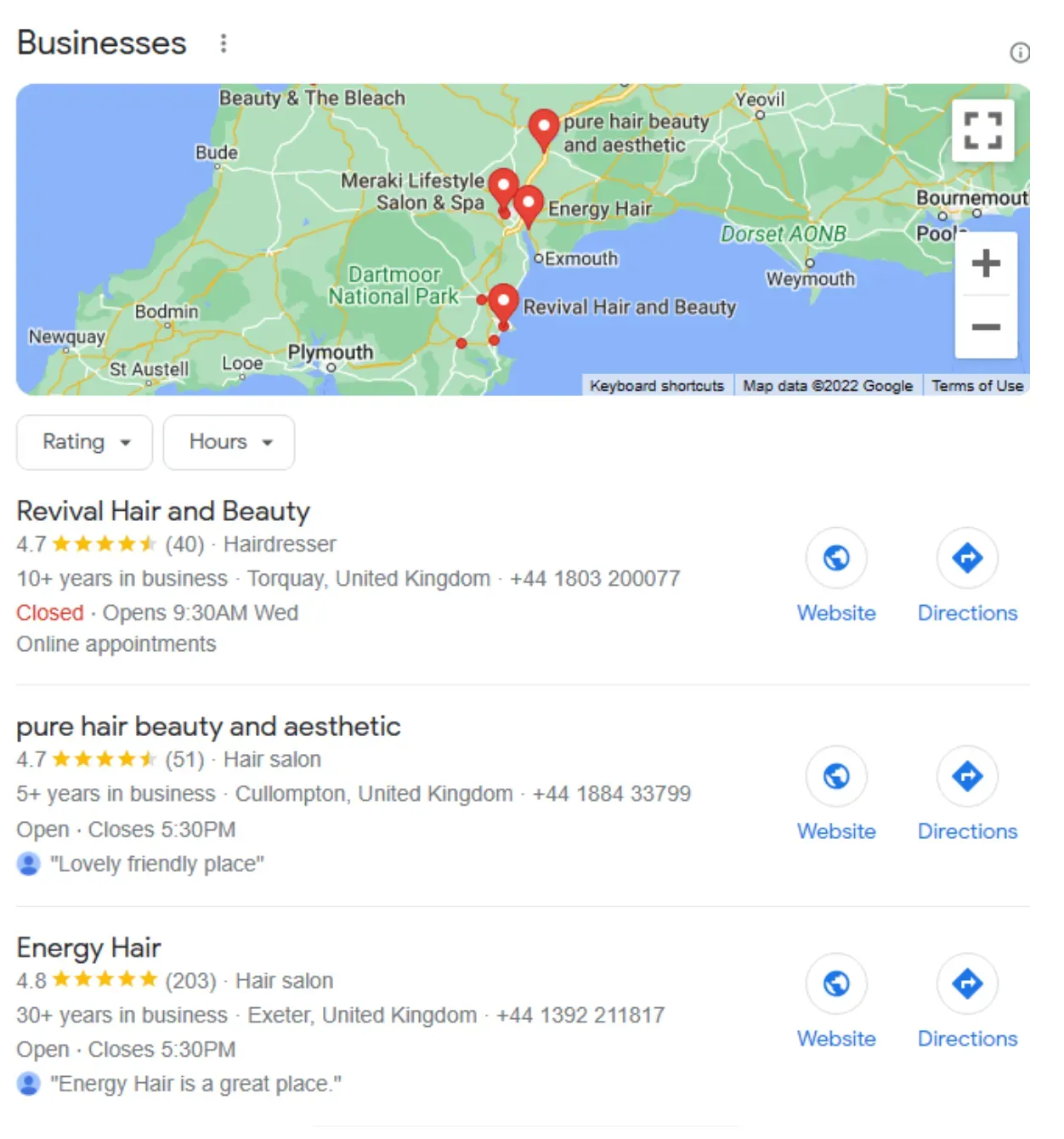
Local search rankings for hair salons in Devon, UK
Google has been somewhat forthcoming about which local SEO ranking factors it considers important, but the specific algorithm is a closely guarded secret. So, based on what Google has told us, as well as Semrush’s significant industry experience, we’ve pieced together several actionable tips to improve your local search rankings and bring in more business for your company.
Which local SEO ranking factors does Google care about?
Google’s support page reveals the three local SEO ranking factors you should be focusing on.
Relevance is how closely related a result is to the search query. For example, we’d expect local search rankings for “steak restaurants in Winnipeg” to favor restaurants that specifically state they are “steak” restaurants above general restaurants that happen to serve steak.
Distance is about how close a local result is to the user. This is an important local search engine rankings factor for smaller businesses, because it allows them to compete with larger businesses that have more reviews (and the resources to generate them).
Prominence is how well known your business is. For example, the number of citations in directories, mentions and backlinks from respected local websites, online reviews, as well as the business’ website and blog content/structure.
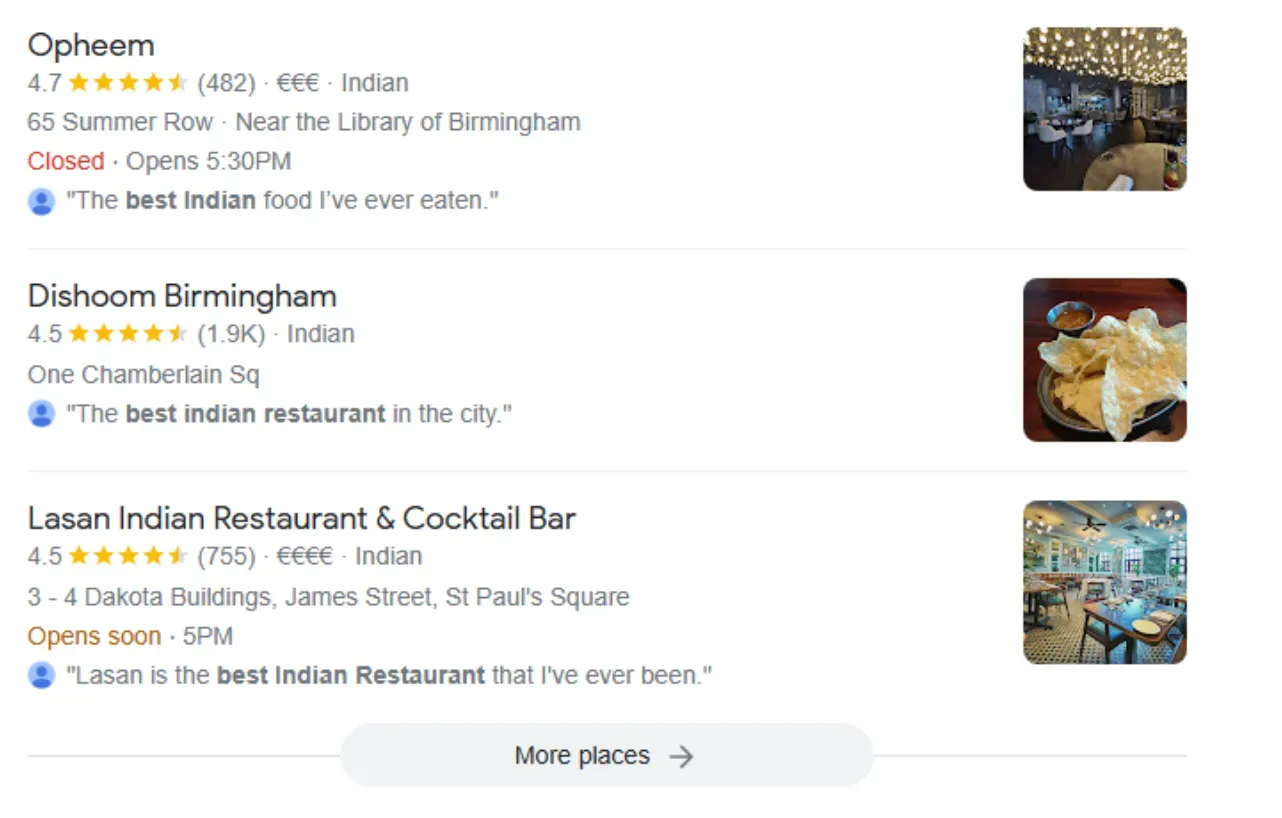
Local search engine rankings for “best Indian restaurants in Birmingham
How to influence local ranking factors
Now we know a bit more about Google local ranking factors, it’s time to get to work on improving your business’ local search engine rankings. First, you’ll need to distribute your business listings to all the top online directories. To make sure your business has the highest chance of being seen as relevant to the user (one of the most important local search ranking factors), complete as many details as possible in your profiles. Name, address and phone number are essential (this is known as NAP data), but where possible, you should also include your logo, opening hours, onsite photos, categories, products, services, and a detailed description.
Top tip: Once you’ve got a large number of citations online, it’s important that you make sure everything is correct and that there are no duplicate listings out there. Semrush Local's Listing Management tool makes it really simple to fix errors in your citations, suppress duplicate listings and update details across all directories in one simple interface.
Pay special attention to your Google Business Profile (GBP), which is what appears in the results page when people search your business name and also where Google Maps gets its data from. Of all your online citations, GBP is considered one of the biggest local search ranking factors, especially for Google results (for obvious reasons). Add content to your GBP, such as local photos and updates, to make it clear your business is active in your location.
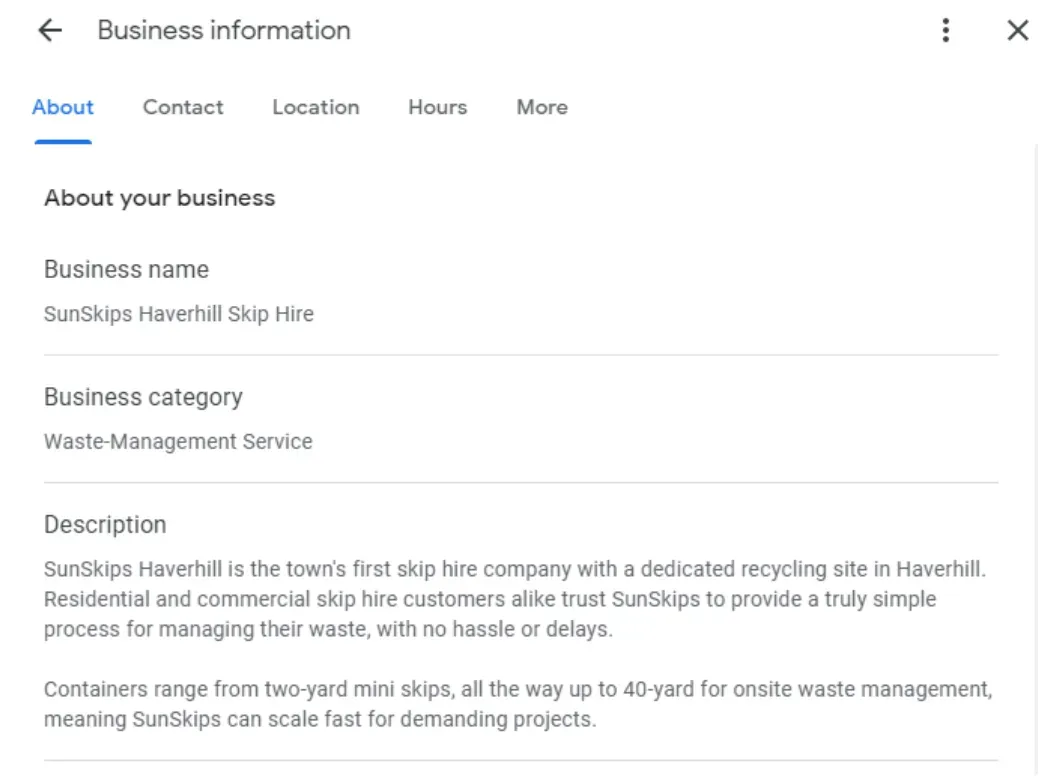
The editing interface for Google Business Profile
Warning: Don’t try to game the system by cramming your Google Business Profile name and description with keywords or claiming a location as open to the public when it’s really a work-from-home address. Infringements against Google’s guidelines for representing your business can seriously impact your local SEO ranking.
Next, you’ll need a solid review generation campaign. This doesn’t need to be any more complicated than sending out a message (SMS, ideally, as they have the highest open rates) with a polite request for a rating, along with a link to your GBP.
When the reviews start coming in, be sure to reply to them in a timely fashion to thank people for their feedback or find out more about why a customer wasn’t satisfied (yes, you need to reply to negative reviews as well).
Optimize your website for local keywords and consider location-specific landing pages with an embedded Google Map and schema code so Google can easily check your NAP data.
Create relevant content about the local area and share on your social channels, email lists and GBP. Also reach out to relevant local website owners and encourage them to link to your content.
Make sure any content you create is high quality and optimized for local search. If users click on your content and immediately decide it's not for them, you’ll end up with a high bounce rate, which sends a signal to Google that your content isn’t solving users’ queries. If you’re not confident you can write compelling local content yourself, consider hiring a writer with experience in SEO. Reach out to local newspaper websites whenever you have anything interesting going on (like a grand opening or fundraising event) and encourage them to link to your site in the write up.
Tracking your local rankings progress
Once you’ve started making moves on influencing the local SEO ranking factors that will determine your online success, you’ll need to get an objective view of how well you're doing. Looking at Google search results doesn’t give you the most accurate representation of where your business ranks locally, because even in incognito mode, Google is influenced by you as a user.
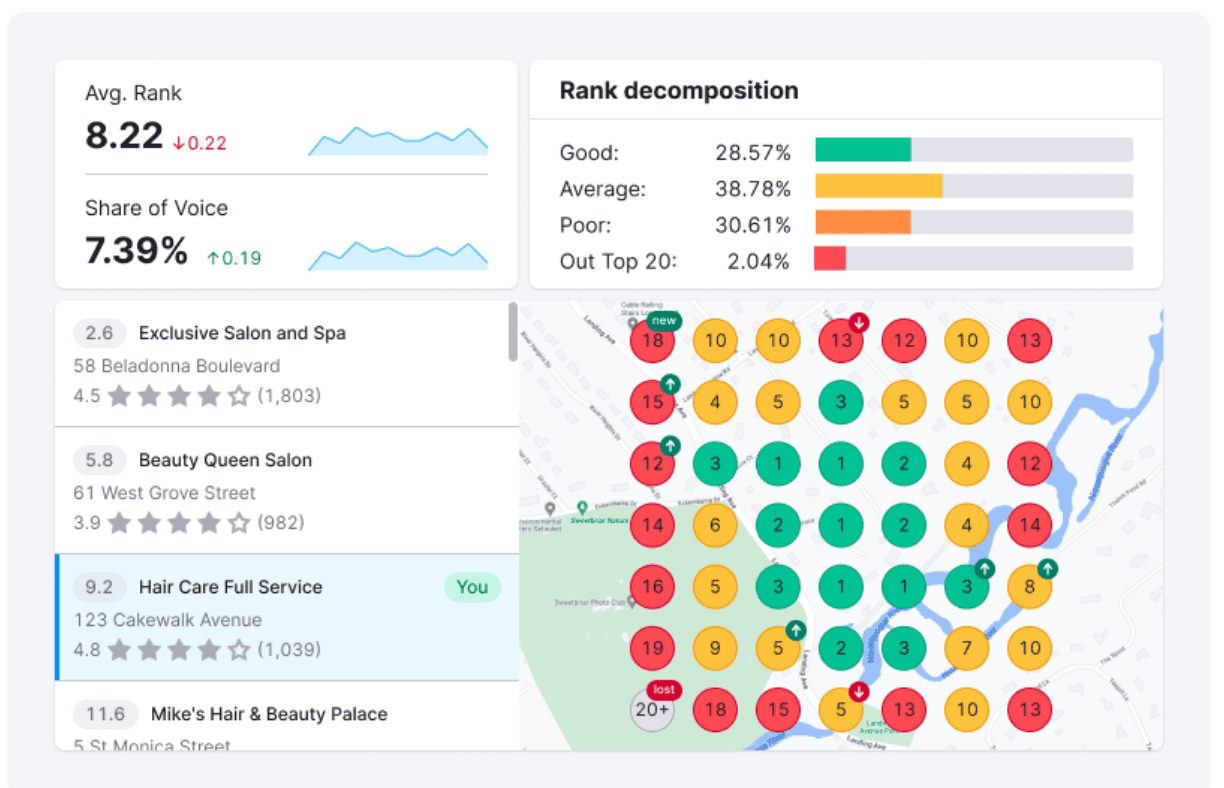
The Map Rank Tracker view of Semrush Local showing Google local ranking results
For the most useful data on your local SEO results, use tools you can trust to give you a genuine average local ranking. Semrush’s Local Map Rank Tracker lets you create clear reports on your local rankings progress so you can be certain all your hard local SEO work isn’t in vain. Map Rank Tracker enables you to create campaigns that monitor a certain city or region area for your target keywords.
Prominence boost: Semrush Local's Listing Management tool is the quickest way to get your business listed on more than 70 directories and improve local search engine rankings
Boost your local search ranking with Semrush Local
Semrush Local's suite of tools give you everything you need to succeed at improving your local SEO rankings, taking a lot of the legwork out of tedious tasks and keeping track of everything for you.
Boost your online prominence in seconds
But with more than 70 important online directories to submit your citations to, it can be a boring, time-consuming job—and keeping track of them all is even more of a headache.
Semrush Local's Listing Management tool takes care of your online prominence by posting your complete citations to the best online directories: one login, no spreadsheets.
